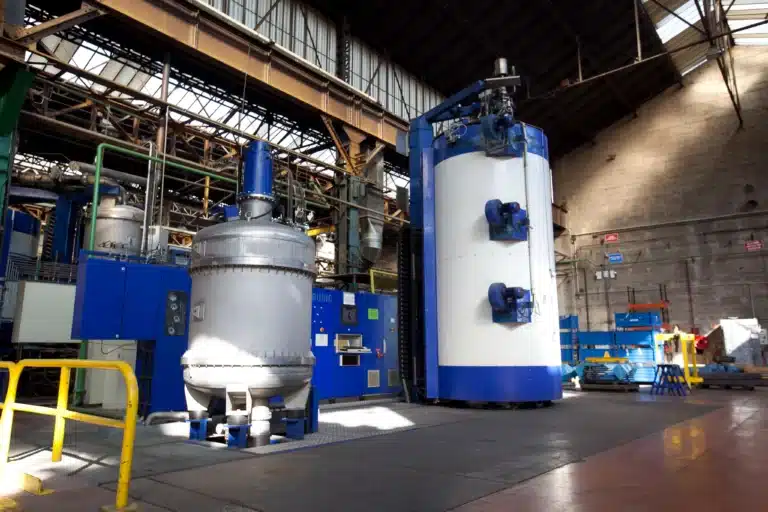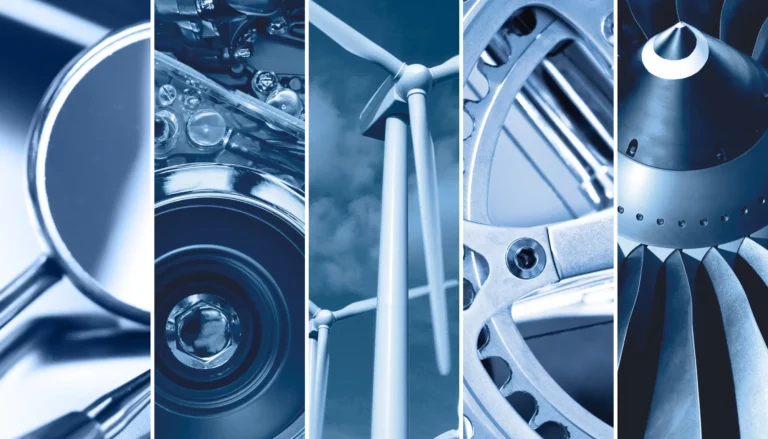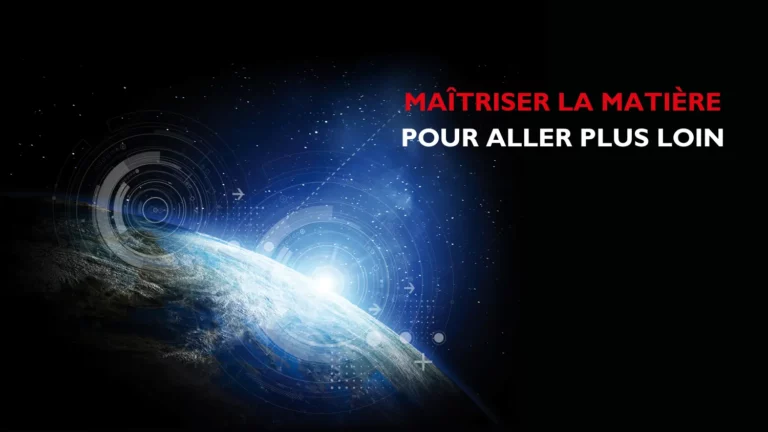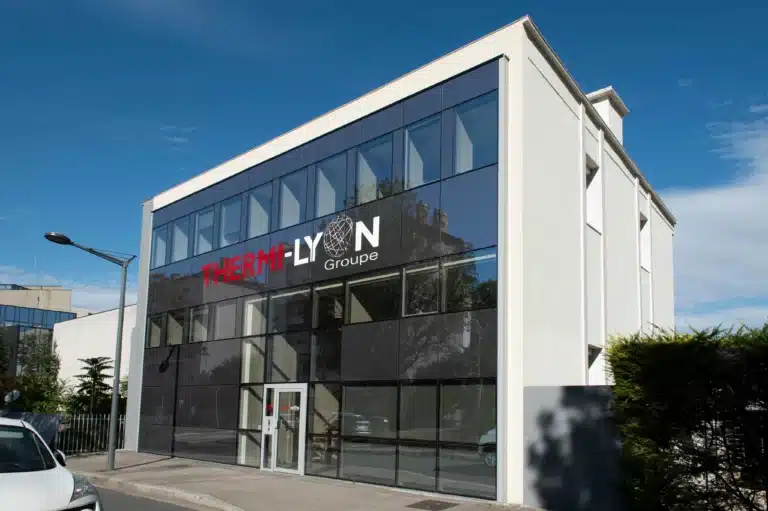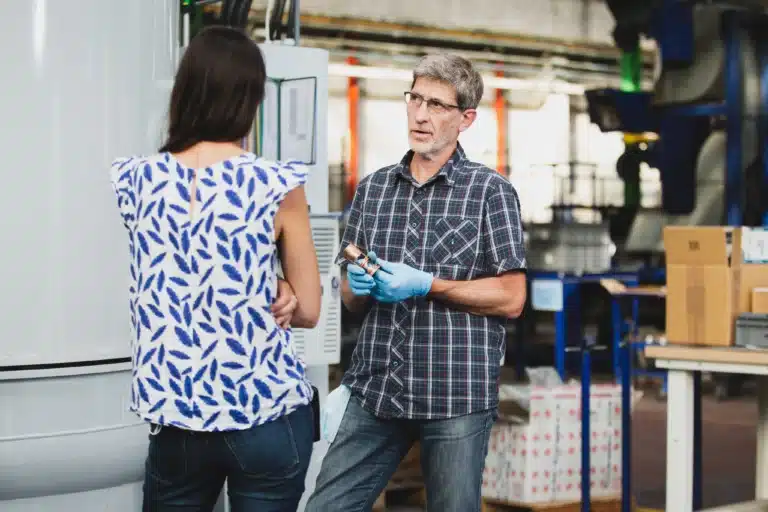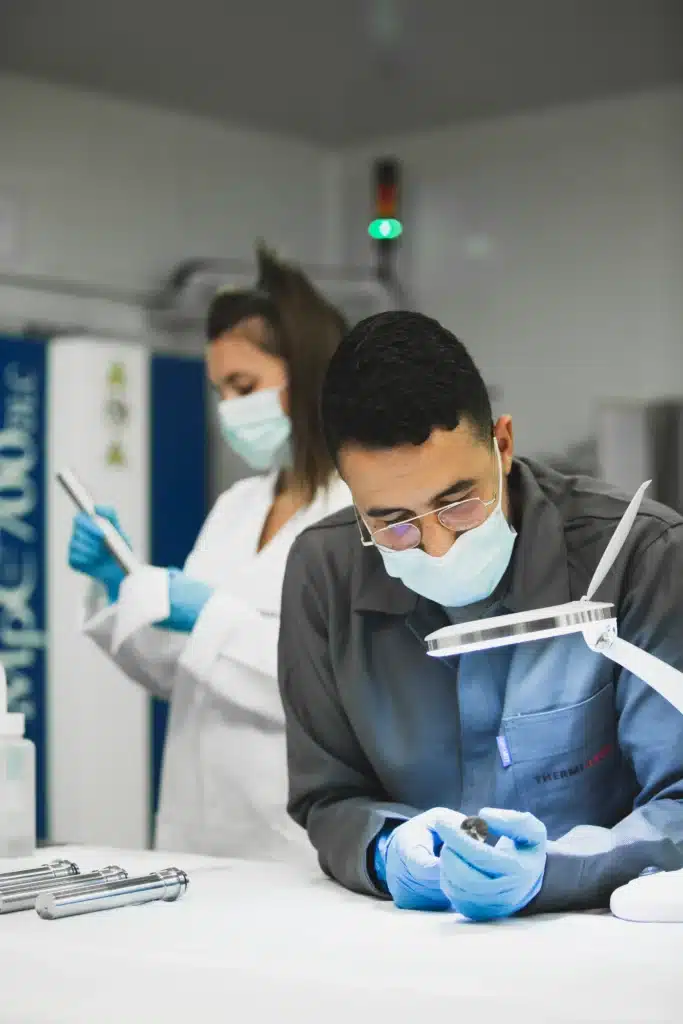Hardening is one of the oldest and most widely used heat treatment methods for metals. Its main purpose is to improve the mechanical strength and overall performance of parts. The parts to be treated are placed in furnaces using different technologies, such as atmosphere or vacuum. These two techniques have different advantages and limitations, so how do you choose between atmosphere quenching and vacuum quenching?
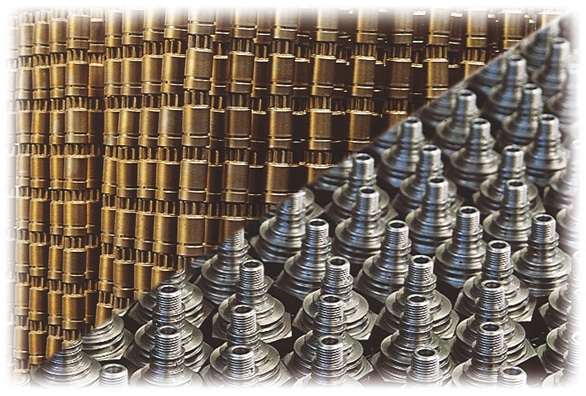
Atmospheric quenching: enhancing the mechanical strength of parts through the use of specific gases
As the name suggests, atmosphere quenching involves injecting a special atmosphere into the parts treatment furnace. The parts are heated to a temperature of around 1,000°C, depending on the alloy (more precisely, between 850 and 1,200°C for steel), and at the same time, specific gases are released to prevent deterioration.
A treatment that preserves the chemical composition of parts
Indeed, during heating, in the absence of a protective atmosphere, some of the chemical elements making up steel can react with oxygen in the air, causing the parts to become brittle. For example, carbon can "evaporate" from the surface of parts at very high temperatures. As a result, the content of these chemical elements decreases, and treated parts become much more brittle and susceptible to breakage. Atmospheric quenching prevents this phenomenon by diffusing a protective atmosphere that prevents both oxidation of the parts, due to the presence of oxygen, and preservation of the carbon content on the surface of the part.
Atmospheric quenching prevents the additional chemical elements contained in the steel used to manufacture the parts from volatilizing, which could lead to a deterioration in characteristics. This method ensures that the final parts retain their high quality and remain noble, as their carbon content determines their mechanical strength. In fact, over- or decarburization, i.e. the addition or loss of carbon in a material, weakens it. Atmospheric quenching therefore preserves the chemical composition of parts.
Why use atmosphere quenching?
The atmosphere quenching method therefore protects the surface of the parts by preventing alteration of their chemical composition. One of the other major advantages of this technique lies in its production capacity: atmosphere quenching takes place in furnaces designed to accommodate large quantities of parts. It is therefore ideally suited to large production runs, particularly for the automotive market. On the other hand, it often relies on gas heating, which contributes to CO2 emissions into the atmosphere. What's more, the processed parts are cooled in a specific oil, which needs to be cleaned after use. This ensures that the parts go from 1,000 to 20 degrees Celsius (ambient temperature) in the space of a few minutes. This method does, however, present a risk of part deformation. To compensate for this deformation, part manufacturers add a machining allowance, which can result in additional costs for the customer. However, this process remains very economical for mass production.
Vacuum quenching: no atmosphere for greener processing
Vacuum quenching, on the other hand, consists of extracting all the air from the furnace prior to treatment. Special pumps evacuate all elements from the atmosphere inside the furnace to prevent damage to parts during the process. This is an ideal technique for processing the most delicate materials, such as titanium, which is extremely sensitive to the presence of oxygen. This method reduces the risk of contamination by chemical elements such as oxygen, and ensures greater cleanliness of the final parts. The materials are then cooled using a neutral gas such as nitrogen or argon, if the grade of alloy allows, resulting in totally clean treated parts, requiring no cleaning and little or no reworking.
The advantages of vacuum quenching
This method guarantees the removal of all contaminants during treatment, making it ideal for parts destined for the medical, aeronautical and automotive sectors, for example. Vacuum hardening also reduces the risk of part deformation, so it is no longer systematically necessary to add a machining allowance, which saves customers time and money . As a result, even though this treatment may appear more expensive, it can be the most economical in the long term.
Last but not least, vacuum quenching is far more environmentally friendly than atmosphere quenching. In fact, the furnaces used run solely on French electricity, which is completely decarbonized, thus avoiding CO2 emissions.
However, not all steels can withstand vacuum quenching with gas cooling. Low-alloy steels, for example, do not always tolerate this treatment and require water or oil cooling. They can therefore only be treated in an atmosphere, or even vacuum quenched, but with oil cooling.
Vacuum and atmospheric furnaces: Thermi Lyon invests for the future
Driven by the desire to protect the planet, but also by the quality of its services, the Thermi Lyon group continues to offer its customers atmosphere quenching and vacuum quenching treatments. Our plants will soon be welcoming a new atmosphere furnace, designed to treat parts for the automotive market, and five vacuum furnaces, for the automotive and aerospace markets. These investments ensure that we can offer objective solutions tailored to each of our customers, and confirm Thermi Lyon's commitment to green and innovative industry, thanks to vacuum technologies.
